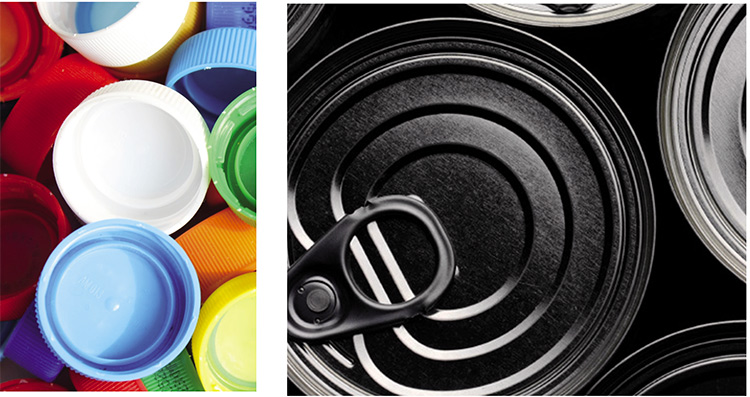The closures market
The various product categories in the “packaging” sector also include closures and accessories, which are indispensable in the process of good preservation and the correct transport of goods.
Barbara Iascone
According to the DL. n. 152 art. 218 the definition of packaging is as follows: «Packaging: the product, composed of materials of any nature, used to contain certain goods, from raw materials to finished products, to protect them, to allow their handling and their delivery from the producer to the consumer or user, to ensure their presentation, as well as disposable items used for the same purpose».
Accessory elements directly fixed or attached to the product and which perform packaging functions, such as closures, must therefore be considered packaging in all respects.
That of closures is a very large area, which can be primarily segmented by material and, secondarily, by type.
Based on the elaborations of the Italian Packaging Institute, in 2018 more than 205.800 tons of closures were produced, to a value of about € 1.2 billion.
In terms of weight, closures represent around 1.3% of the packaging sector as a whole, while, in terms of value, they account for 3.6%.

Segmentation by material
Analysing the closure sector in terms of tons, 56.3% is accounted for by plastic closures, used on a large scale and made with a relatively light material.
These are followed by steel closures (32.3% share), aluminium closures (9.1%) and cork stoppers (2.3%). Finally, a very small percentage of glass closures (0.01%) is also registered, used exclusively for alcoholic beverages, in some rare cases considered almost luxury packaging.
Segmentation by type
There are many types of closures on the market, that differ according to type of material.
Plastic closures. Plastic closures - which reached 119 t/000 in 2018 - are divided into capsules for bottles and jars, bottle caps or tops for rigid laminate containers mainly made out of paper, tube closures.
The thin sheet applied to close the plastic trays also belongs to this family: welded to the edges of the container, it responds perfectly to the barrier function which it is required to perform, to all effects becoming a closure. Used mainly in packs of fresh cold cuts, of meats and fish, cheeses, fresh pasta, etc., in the non-food sector this type of closure is often used to package cartridges for printers or in the toy sector. Based on the data processed by the Data Bank of the Italian Packaging Institute, the plastic bottle caps account for 51% of plastic closures, while the capsules for jars and flacons account for 41% of the segment. The latter category includes closures for flacons (domestic detergents, various chemical products, etc.), capsules for food jars (spreads, vegetable preserves sauces, etc.) and closures for both the cosmetics and pharmaceutical sectors.
In the field of flacon closures there are also those closures fitted with built-in dispensers, present aboveall in the domestic detergent sector (spray detergents, refills, etc.), but also used in the cosmetic and pharmaceutical sector. Closures applied to tubes account for about 4%, as do the plastic films for trays.

Steel closures. The steel closures, which in 2018 comprised 63 t/000, include screw caps, used mainly to close glass jars and representing 47% of total steel closures. Then we have crown caps, 18% of which used for glass bottles, mainly for beer, carbonated drinks and mineral water. Also part of the steel closures category are the easy-to-open open top lids, and steel tins whose cover is an integral part of the body of the same, being crimped directly onto it. The latter type of closure accounts for 35% of steel closures.
Aluminium closures. The 18 t/000 aluminium closures produced in 2018, can be broken down as follows:
- screw caps for bottles (60%) used mainly on mineral water, spirits and olive oil bottles. In recent years, some carbonated beverage brands have introduced them in place of crown caps; however, they are also used in cosmetics packaging;
- thin aluminium sheet comprises 22%, used as a closure for yogurt jars, single-dose portions of honey or jams, etc.;
- 11% is comprised of screw capsules, used for example for baby food or in the cosmetics sector;
- 7% is represented by easy-open closures used for food preserves.
Corks. The 4.8 t/000 produced in 2018 were used almost exclusively in the alcoholic beverages sector, with a clear prevalence for the still and sparkling wines area (94% share); the remaining 6% can be broken down into a 5.9% stoppers for spirits bottles and 0.1% in closures applied to certain glass jars, used as gift packs containing salts or spices.
Barbara Iascone
Istituto Italiano Imballaggio



















